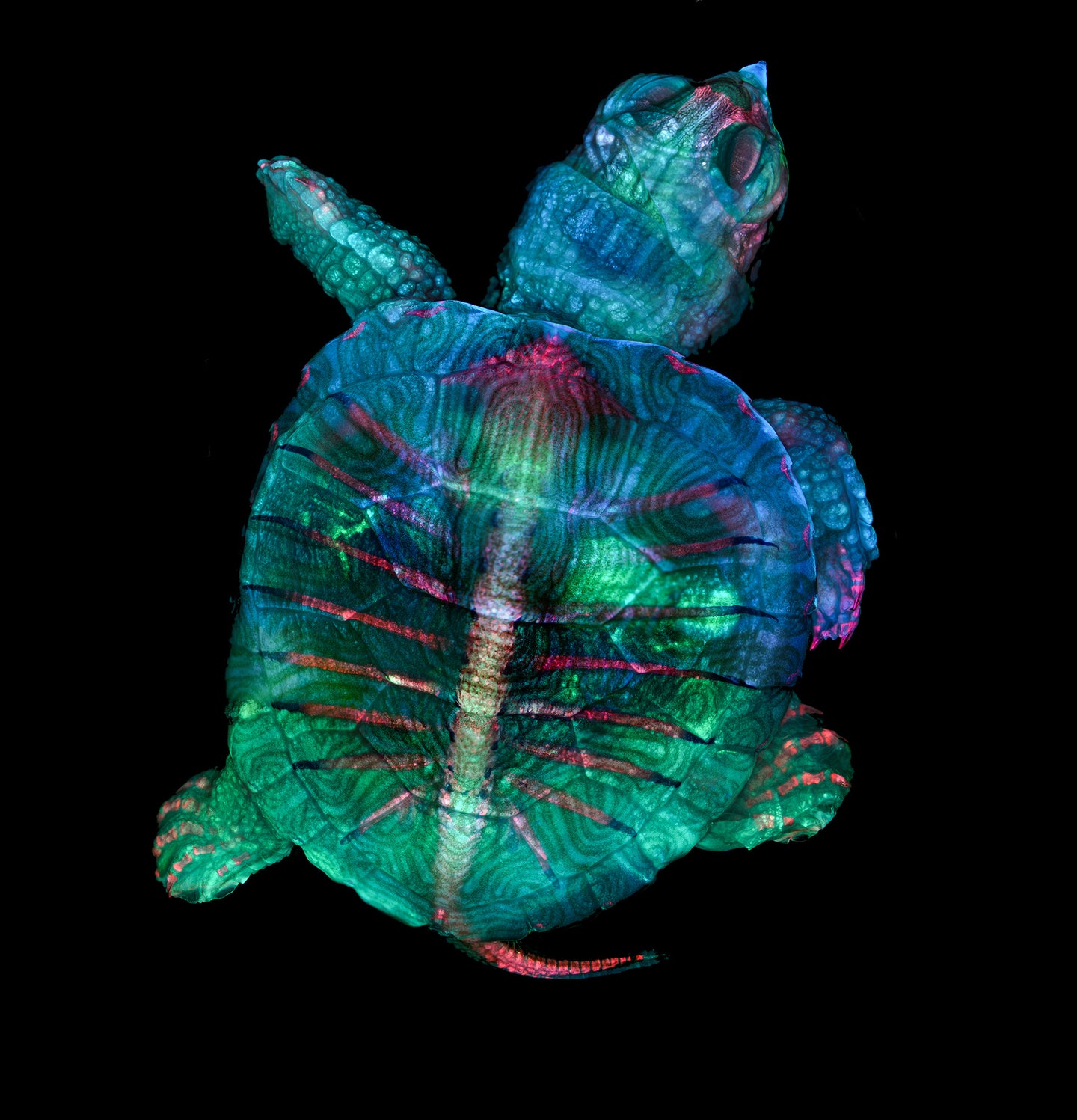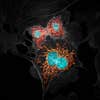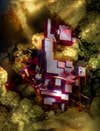This fluorescent turtle embryo is just one of the year’s most captivating photos of tiny stuff
Nikon’s 45th annual Small World Photomicrography Competition blends science and artistry under the microscope.

An ornate magenta and fluorescent sea-foam colored shell conceals the wiggling flippers of a turtle embryo. Four of the eight onyx eyes of a small, white-haired spider stare back at you. Fractal white peaks fill the frame encapsulating a frozen water droplet. These are some of the winners of Nikon’s 2019 Small World Photomicrography Competition.
Photomicrography is an art form that brings together the creativity of science by capturing breath-taking moments beneath the microscope. The annual competition has recognized dazzling images like these since 1974 and is widely regarded as the leading forum for acknowledging the skill involved in photomicrography.
“Our goal has always been to show the world how art and science intersect,” said Eric Flem, communications manager of Nikon Instruments in a press release. “As new imaging and microscopy techniques develop over the years, our winners showcase these technology advances more and more creatively.”
This year’s competition included over 2,000 images from scientists in almost 100 countries. Below are our five favorites taken from the 20 winning shots.
First Place (above)
2019’s winning shot of a fluorescent turtle embryo is actually a compilation of hundreds of separate images. Captured by microscopy technician Teresa Zgoda and recent university graduate Teresa Kugler, the embryo was difficult to capture due to its large size—it was over an inch long and thick. Consequently, only a small piece of the turtle embryo could be focused on at one time. Zgoda and Kugler had to stitch and stack together over a hundred images to create the final shot.
“Microscopy lets us zoom in on the smallest organisms and building blocks that comprise our world— giving us a profound appreciation for the small things in life that far too often go unnoticed,” said Kugler. “It allows me to do science with a purpose.”

Sixth Place

Eighth Place

Tenth Place

Thirteenth Place